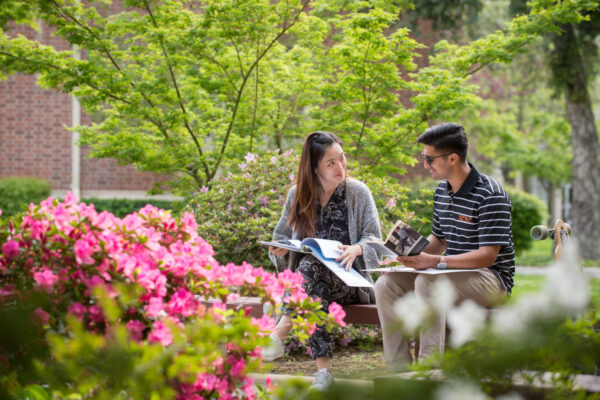By Georgiana Mihut and Robin Helms
This post is part of the series Beyond the Margins: Meeting the Needs of Underserved Students.
The U.S. higher education system is vast, diverse, and complicated to navigate, and earning a degree can be difficult. The challenge is especially felt by students entirely new to the U.S. higher education system and its culture. This includes both first-generation students and international students.
On campuses, support services for international students and first-generation students are usually separated. The assumption is that these two groups of students have different needs. But we believe that the two groups have much in common and would benefit from joint institutional programming.
Challenges faced by first-generation students
Roughly one in five students at U.S. higher education institutions is first-generation, and they face multiple barriers to access and completion. They are less likely to enroll in postsecondary degree programs, and when they do, their completion rate is almost half that of students whose parents finished college.
One of the most significant barriers, at least for some first-generation students, is navigating the complex postsecondary system and unfamiliar academic culture. In his acclaimed work on low-income students at elite universities, Anthony Jack suggests that low-income, first-generation students are not a homogenous group. Some students from underprivileged backgrounds adjust well and even thrive in college, whereas others struggle to navigate their new environment and integrate. He traces this difference to programs like Prep for Prep and A Better Chance, which give early exposure to college norms and the cultural milieu, mitigating the gaps in cultural capital of low-income, often first-generation students.
Many institutions and organizations have developed resources to support the transition of first-generation students to college and help them succeed. At the same time, inadequate funding often limits how much institutions can do to best serve their first-generation students. Using technology to better assist these students can complement and scale existing efforts affordably. However, a less-discussed avenue of intervention is leveraging the resources already designed for international students.
Supporting international students in U.S. higher education
Multiple resources have been designed to support the integration and success of the over 1 million international students enrolled at U.S. higher education institutions. The U.S. Department of State has 433 advising centers for prospective and accepted international students in all world regions and has compiled a glossary with terms specific to U.S. higher education to help those students better understand the system. Regional and national associations, such as NAFSA, offer extensive resources for international students. Higher education institutions immerse international students in extensive orientation sessions, distribute comprehensive informational material, require international students to complete tailored freshman courses, and offer ongoing spaces for conversations both on campus and virtually. Media outlets, blog writers, and private companies also offer tailored resources to international students to support their integration.
Much of this collective effort is geared toward ensuring that international students understand the culture of U.S. higher education and are equipped to navigate it. International students learn not only the immigration and visa requirements they are subject to, how to obtain a social security number, and how to file taxes, but also how to behave in class, what office hours are and how to make best use of them, what the norms of academic integrity are, and how to interact with their American peers. The support for international students stems from the justified belief that because international students have little to no firsthand experience with the higher education system in the United States, their success is contingent upon translating and effectively communicating within the norms and intricacies of the system.
In part, it works. At all institutional types and across institutions with different levels of selectivity, international students have higher graduation rates than the national average for U.S. students. At four-year institutions that accept less than 25 percent of applicants, 88.1 percent of all students graduate within six years. For international students, the graduation rate increases to 92.1 percent.
How first-generation students and international students diverge
While international and first-generation students face some common challenges, there are some distinctions.
International students tend to come from wealthier family backgrounds. According to the U.S. Department of Education, 27.7 percent originate from the top income quartile.
International students also are most likely among any racial and ethnic group to attend moderately selective and very selective institutions. In many ways, the college persistence and completion outcomes of international students are a reflection of their academic readiness. Leveraging resources designed for international students to support first-generation students would represent an addition, not a substitution, to providing other services.
How can we serve both first-generation students and international students?
Jane Etish-Andrews is the former director of the International Center at Tufts University, where she served for 35 years. Etish-Andrews believes that interactions between international and first-generation students can facilitate cross-cultural learning that benefits both groups of students, and contributes to broader campus internationalization. In our conversation on areas where programing for first-generation students and international students can converge, she provided some examples.
- At Tufts, orientation sessions are provided separately for first-generation and international students. Some first-generation international students opted to attend the orientation session provided for first-generation students.
- Winter break housing alternatives designed to host international students who cannot travel home are made also made available to first-generation students.
- Support initiatives such as winter coat drives initially designed for international students proved to be useful for first-generation students.
While these examples primarily address pragmatic needs, simple initiatives along these lines can help campuses start to think about more intensive programming that intentionally integrates international and first-generation students, and addresses the deeper cultural challenges faced by students who are new to the U.S. higher education system. Many resources already developed and used for international students would be useful for first-generation students and vice versa; with creativity and collaboration, institutions can better serve and support both of these important student populations.
If you have any questions or comments about this blog post, please contact us.



